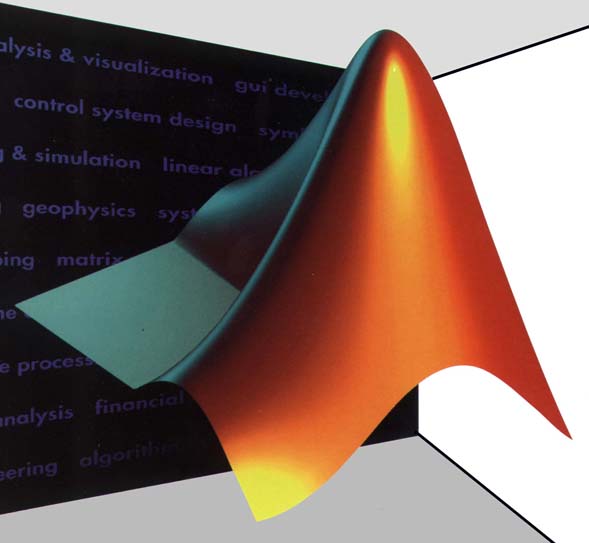|
COURSE GOALS: |
 |
Introduce MATLAB® as a programming
medium and mathematical software |
 |
Teach important aspects of
mathematical modeling and numerical methods |
 |
Enhance students' programming
skills using the MATLAB®
environment to implement numerical method algorithms |
 |
Teach the use of MATLAB® as a tool
(using built-in functions) for solving mathematical problems
that require numerical solutions |
 |
Introduce the simulation
tools of MATLAB® |
|
|
|
|
COURSE MAIN TEXTBOOK:
|
 |
Students should refer to
various sources including the textbooks listed
below and Mathworks web site for MATLAB tutorials
|
|
|
|
|
SUPPLEMENTARY TEXTBOOKS:
|
 |
U. Arifoğlu and C. Kubat,
Matlab ve Mühendislik Uygulamaları, Alfa Basım Yayım Ltd.,
2003, ISBN:9752973809
|
 |
C. Moler, Numerical Computing with MATLAB®,
Electronic edition: The MathWorks, Inc., Natick, MA, 2004,
http://www.mathworks.com/moler. Print
edition: SIAM, Philadelphia, 2004.http://ec-securehost.com/SIAM/ot87.html
|
 |
L.
v. Fausett, Applied Numerical Analysis Using MATLAB® 2/E,
Prentice Hall, ISBN: 0132397285
|
 |
S.
Nakamura, Numerical Analysis and Graphic Visualization with
MATLAB® , 2/e, Prentice Hall, 2002, ISBN:01306548921
|
 |
A.
Gilat and V. Subramaniam, Numerical Methods for Engineers and
Scientists, John Wiley & Sons, Inc., 2008, ISBN:
9780471734406
|
 |
|
 |
J.
H. Mathews and K. D. Fink, Numerical Methods Using MATLAB®,
3rd ed, Upper Saddle River, NJ: Prentice Hall, 2004, ISBN:
0130652482
|
 |
J.
Kiusalaas, Numerical Methods in Engineering with MATLAB® ,
Cambridge University Press, 2005, ISBN: 0521852889
|
|
|
|
|
SCHEDULE: |
 |
Tuesday...............
4.30 PM - 7.00 PM
|
|
|
|
|
CONTENT: |
 |
Basic MATLAB® commands, fundamental
formulation, methodology and techniques for numerical solution
of engineering problems, fundamental principles of digital
computing and the implications for algorithm accuracy and
stability, error propagation and stability analysis
|
|
|
|
|
OBJECTIVES:
|
 |
Implement an understanding of the
numerical methods for mathematical problem solving
|
 |
Instill the abilities of both hand
computation and programming applied in MATLAB® medium
|
|
|
|
|
COURSE FORMAT:
|
 |
The course consists of classroom instruction including
lectures using classical lecture style, power point slides, and
simultaneous Matlab applications via projection
|
 |
Homeworks are given take-home
style to increase students' numerical analysis skills using
MATLAB®
|
|
|
|
|
SYLLABUS: |
 |
MATLAB®
environment & programming
|
 |
Background
for matrix and vector operations;
|
 |
Introduction to
numerical methods; Systems of linear equations:
Unsolvable and
ill-conditioned systems, condition number |
 |
Solving systems
of Linear Equations: Background,
Gauss
elimination method, Pivoting, Gauss-Jordan method |
 |
Solving systems
of Linear Equations:LU
decomposition method, inverse of a matrix, brief MATLAB® review |
 |
Solving systems
of Linear Equations: Iterative methods, use of MATLAB® built-in
functions |
 |
Matrix
eigenvalues and eigenvectors;
Power method |
 |
Curve Fitting
and interpolation; interpolation using a single polynomial,
Lagrange and Newton’s polynomials,
|
 |
Piecewise interpolation,
linear, quadratic, and cubic splines, use of MATLAB built-in
functions for curve fitting and interpolation |
 |
Nonlinear
equations; background, estimation of error;
Solving nonlinear equations;
Fixed-point
iteration method, Bisection method, Regula Falsi method, Secant method
|
 |
Multivariate
systems of nonlinear equations; Newton’s method,
use of MATLAB built-in functions; equations with multiple
solutions |
 |
MATLAB
Graphics |
 |
Optimization problems |
 |
Simulation
with Matlab |
Additional
Topics
 |
Numerical
differentiation; Differentiation using Lagrange polynomials, use
of MATLAB built-in functions for numerical differentiation |
 |
Numerical
differentiation; Richardson’s extrapolation, error in numerical
differentiation, numerical partial differentiation |
 |
Numerical
Integration; background, rectangle and midpoint methods,
trapezoidal method, Simpson’s methods; use of MATLAB built-in
functions for integration, Richardson extrapolation, Romberg
integration |
 |
ODE initial
value problems; Runge-Kutta methods, multistep methods,
predictor-corrector methods, system of first-order ODEs,
higher-order IVP; local truncation error in 2nd-order
Runge-Kutta method, step size for desired accuracy, stability,
stiff ODEs |
|
|
|
|
